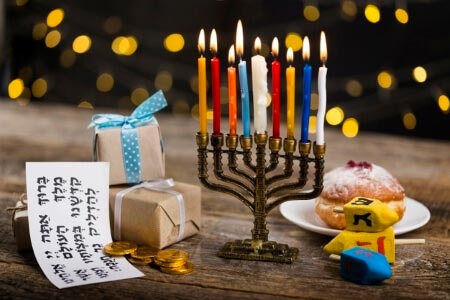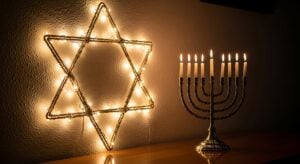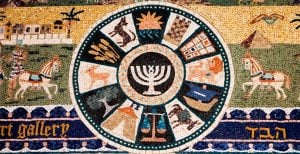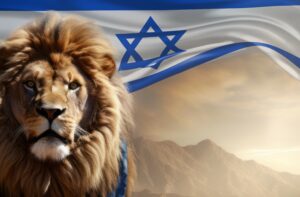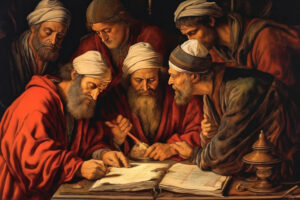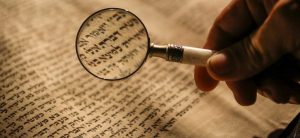The moment anyone says the word, ‘Hanukkah,’ immediately, a flood of images comes to mind of beautiful Hanukkah Menorahs burning brightly in Jewish windows; of plates stacked high with crispy, fried potato latkes and sweet, jelly-filled sufganiyot; and of happy children playing on the floor with their games of Dreidels and gelt. Indeed, the overall impression most of us have of Hanukkah is that this holiday, the Festival of Lights, is a time for unbridled joy, luminescence, gift-giving, and love, which it certainly is – but have you ever stopped and found yourself wondering about the holiday’s origins?
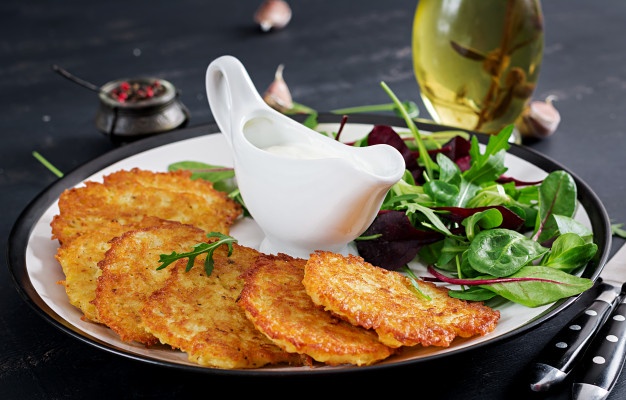 If you haven’t, there’s nothing to worry about because you’re definitely not alone! We all know what it’s like to become so distracted by the mesmerizing, flickering glow of the Hanukkah candles, the heaps of good food, and all that holiday excitement that we seldom even realize if we’re forgetting to give thought to those bits and pieces of the Hanukkah story we’re familiar with! That’s why, with Hanukkah just a few short weeks away, we figured that now would be a great time to go over the history of Hanukkah so that when the 25th of Kislev arrives, each of us can appreciate our Hanukkah celebrations even more! And maybe, just maybe, we can help you discover some amazing things you might not have known about the Festival of Lights so let’s get started!
If you haven’t, there’s nothing to worry about because you’re definitely not alone! We all know what it’s like to become so distracted by the mesmerizing, flickering glow of the Hanukkah candles, the heaps of good food, and all that holiday excitement that we seldom even realize if we’re forgetting to give thought to those bits and pieces of the Hanukkah story we’re familiar with! That’s why, with Hanukkah just a few short weeks away, we figured that now would be a great time to go over the history of Hanukkah so that when the 25th of Kislev arrives, each of us can appreciate our Hanukkah celebrations even more! And maybe, just maybe, we can help you discover some amazing things you might not have known about the Festival of Lights so let’s get started!
What is Hanukkah and why is it celebrated?
In Hebrew, the word Hanukkah (חֲנוּכָּה) means “dedication,” and the reason why this particular name was chosen for the holiday instead of any of the other Hanukkah themes is to emphasize the most fundamental reason why we celebrate it: to commemorate the astonishing miracle of liberating and rededicating the Second Holy Temple in renewed service to Hashem.
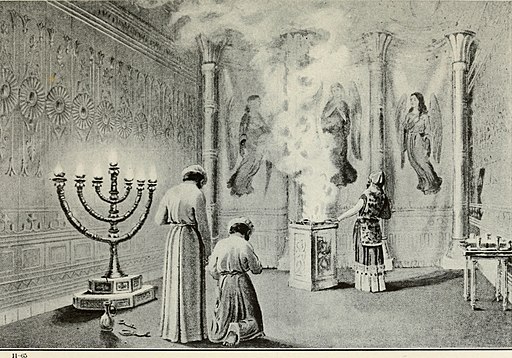 At its core, there’s a profound beauty to this choice of name. It speaks of the immeasurable resolve the Jewish freedom fighters had as they faced impossible odds to reclaim Jerusalem and return ancestral Jewish worship to the Land of Israel. Choosing this name shows us how even though the Hanukkah story is full of miraculous events, the ultimate miracle in the eyes of the Jews was that they finally succeeded in restoring God’s sacred house of worship after it was vandalized by the Syrian-Greeks – a feat that should never have been possible, but that they achieved through their unshakable faith, their indomitable courage, and their heroic, tenacious actions. Here’s how they did it:
At its core, there’s a profound beauty to this choice of name. It speaks of the immeasurable resolve the Jewish freedom fighters had as they faced impossible odds to reclaim Jerusalem and return ancestral Jewish worship to the Land of Israel. Choosing this name shows us how even though the Hanukkah story is full of miraculous events, the ultimate miracle in the eyes of the Jews was that they finally succeeded in restoring God’s sacred house of worship after it was vandalized by the Syrian-Greeks – a feat that should never have been possible, but that they achieved through their unshakable faith, their indomitable courage, and their heroic, tenacious actions. Here’s how they did it:
The Beginnings of Discord
Over 2,000 years ago, Israel went through a tragic period of time when the land and its inhabitants were conquered and reconquered by one enemy empire after another. Over time, Israel eventually became part of the Syrian-Greek empire after Antiochus III, known as Antiochus the Great of the Seleucid dynasty, captured Israel from the Ptolemaic Kingdom of Egypt. This proved to be relatively good for the Jews as Antiochus III was sympathetic to his Jewish subjects and granted them the right to live according to their ancestral ways, letting them practice the Jewish religion without interference.
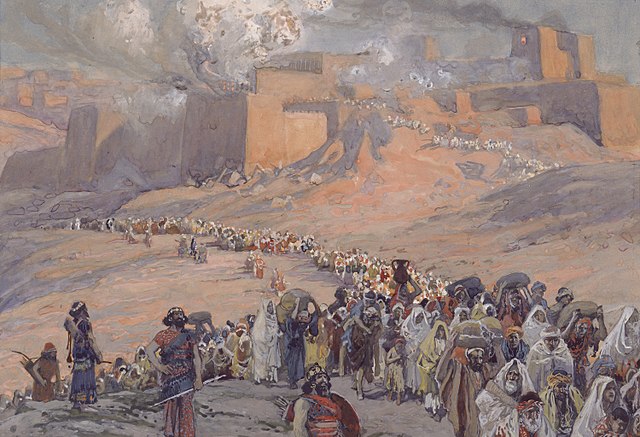 Antiochus III’s son, however, was not as compassionate. When Antiochus IV came into power, his reign was cruel and tyrannical. He decided to invade Judea and revoke all the religious freedoms his father had imparted to the Jews. He ordered that the Second Holy Temple be looted, its services stopped, and that an altar to the Greek god Zeus be erected inside the Temple for pigs to be slaughtered on. He also outlawed the practice of Judaism and banned the mitzvah of Brit Mila (circumcision.) These sacrilegious desecrations and intolerant actions greatly angered the Jews, however, it was Antiochus IV’s ruthless exploits to stamp out the region’s native culture and religion and replace it with coerced Hellenistic worship that would prove to be the final straw for the Jews…
Antiochus III’s son, however, was not as compassionate. When Antiochus IV came into power, his reign was cruel and tyrannical. He decided to invade Judea and revoke all the religious freedoms his father had imparted to the Jews. He ordered that the Second Holy Temple be looted, its services stopped, and that an altar to the Greek god Zeus be erected inside the Temple for pigs to be slaughtered on. He also outlawed the practice of Judaism and banned the mitzvah of Brit Mila (circumcision.) These sacrilegious desecrations and intolerant actions greatly angered the Jews, however, it was Antiochus IV’s ruthless exploits to stamp out the region’s native culture and religion and replace it with coerced Hellenistic worship that would prove to be the final straw for the Jews…
The Start of an Uprising
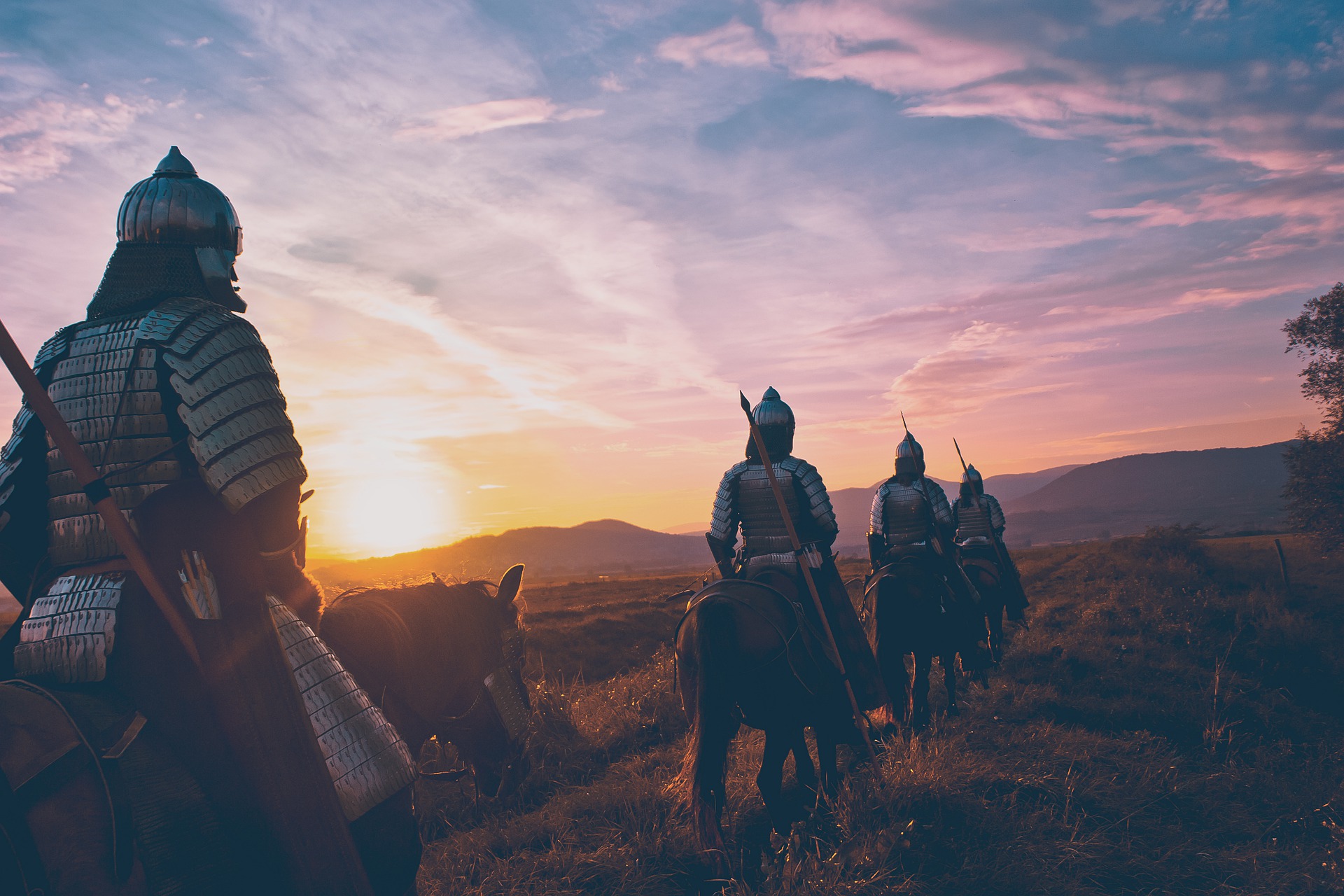 After years of brutal religious persecution, the initial act of defiance to spark the flames of Jewish rebellion finally came when a group of Antiochus’s soldiers arrived one day in the Judean village of Modiin. The soldiers erected an altar and commanded the elderly Jewish priest Mattityahu to offer sacrifices on it to the Greek gods. Mattityahu not only refused to obey this order while proclaiming his undying loyalty to Hashem, but he, his sons, and their friends quickly took up arms and charged at the soldiers, killing most and chasing the rest away. Then, knowing that his rebellious act would provoke the wrath of the king, Mattityahu, his sons, and his followers fled into the hills to hide, but soon, word of their assault spread, and hundreds of loyal and courageous Jews came flocking to the area to join forces with Mattityahu and his ragtag band of insurgents. With their numbers growing rapidly, Mattityahu and his five sons Yochanan, Shimon, Eliezer, Yonatan, and Yehudah found themselves at the forefront of a small rebel army who called themselves the ‘Maccabees.’
After years of brutal religious persecution, the initial act of defiance to spark the flames of Jewish rebellion finally came when a group of Antiochus’s soldiers arrived one day in the Judean village of Modiin. The soldiers erected an altar and commanded the elderly Jewish priest Mattityahu to offer sacrifices on it to the Greek gods. Mattityahu not only refused to obey this order while proclaiming his undying loyalty to Hashem, but he, his sons, and their friends quickly took up arms and charged at the soldiers, killing most and chasing the rest away. Then, knowing that his rebellious act would provoke the wrath of the king, Mattityahu, his sons, and his followers fled into the hills to hide, but soon, word of their assault spread, and hundreds of loyal and courageous Jews came flocking to the area to join forces with Mattityahu and his ragtag band of insurgents. With their numbers growing rapidly, Mattityahu and his five sons Yochanan, Shimon, Eliezer, Yonatan, and Yehudah found themselves at the forefront of a small rebel army who called themselves the ‘Maccabees.’
The Maccabees Strike Back!
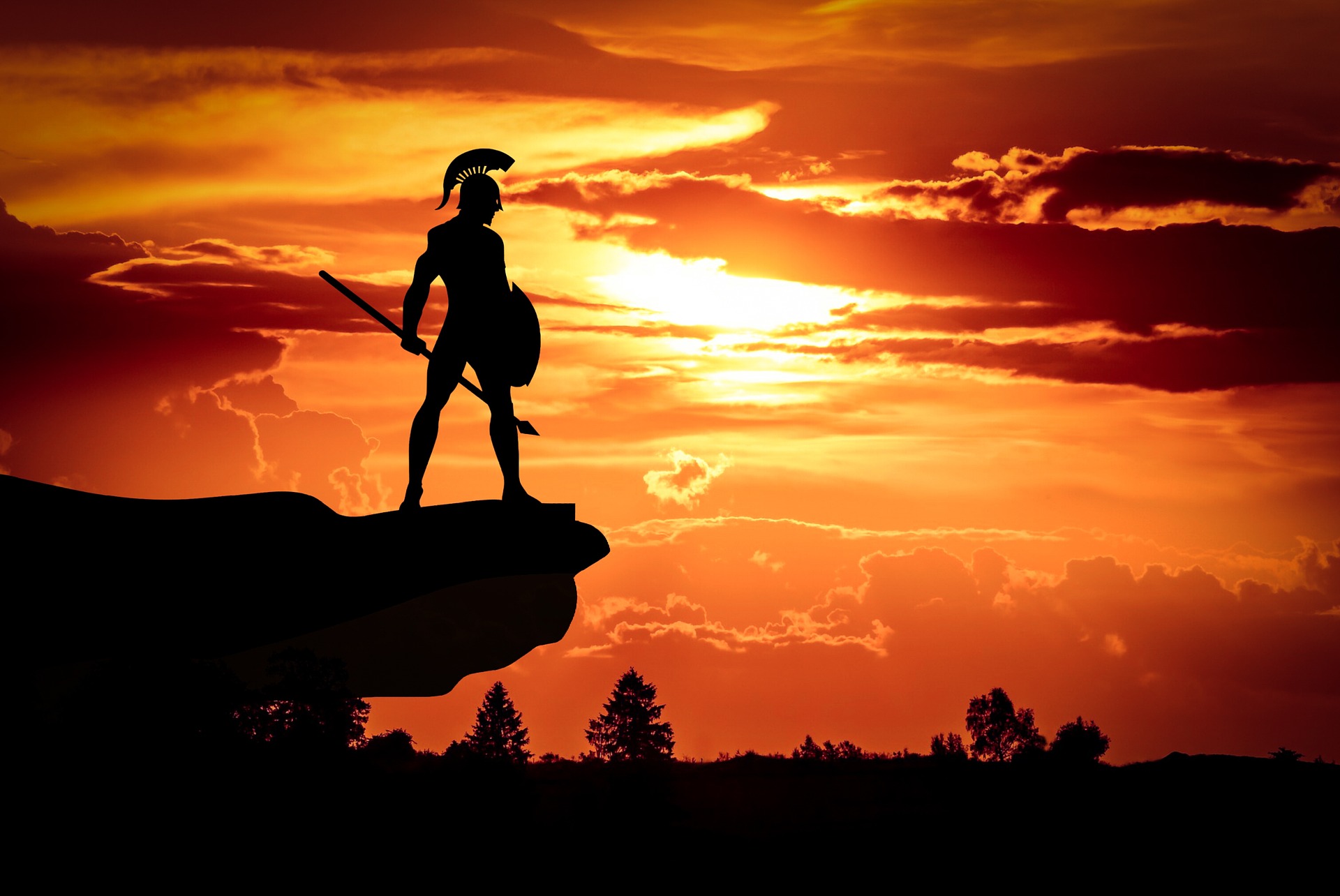 Though they knew that they stood almost no chance of surviving against the devastating might of the powerful Syrian-Greek army, the Maccabees refused to surrender themselves. Instead, the intrepid rebels started launching one covert attack after another upon their disbelieving enemies, who, to their shock and dismay, found themselves soundly defeated time after time. Relying mainly on guerrilla warfare tactics to offset the many disadvantages and discrepancies between their army and their adversaries; under the wise leadership of Mattityahu, and later, Yehuda HaMaccabee, the Maccabees steadily grew stronger and more formidable despite being vastly outnumbered, poorly armed, and short on defensible positions to protect them from their enemy’s retaliation. Within a few short months, the Jewish rebels had inexplicably succeeded in becoming a massive thorn in the sides of the Syrian-Greeks with their persistent ambushes, strategic raids on enemy camps and supply lines, and their relentless onslaughts. Defying all odds, the Maccabees quickly made a name for themselves as they showed the Syrian-Greeks that although they were few in number, their ferocity and fearlessness made them a force to be reckoned with!
Though they knew that they stood almost no chance of surviving against the devastating might of the powerful Syrian-Greek army, the Maccabees refused to surrender themselves. Instead, the intrepid rebels started launching one covert attack after another upon their disbelieving enemies, who, to their shock and dismay, found themselves soundly defeated time after time. Relying mainly on guerrilla warfare tactics to offset the many disadvantages and discrepancies between their army and their adversaries; under the wise leadership of Mattityahu, and later, Yehuda HaMaccabee, the Maccabees steadily grew stronger and more formidable despite being vastly outnumbered, poorly armed, and short on defensible positions to protect them from their enemy’s retaliation. Within a few short months, the Jewish rebels had inexplicably succeeded in becoming a massive thorn in the sides of the Syrian-Greeks with their persistent ambushes, strategic raids on enemy camps and supply lines, and their relentless onslaughts. Defying all odds, the Maccabees quickly made a name for themselves as they showed the Syrian-Greeks that although they were few in number, their ferocity and fearlessness made them a force to be reckoned with!
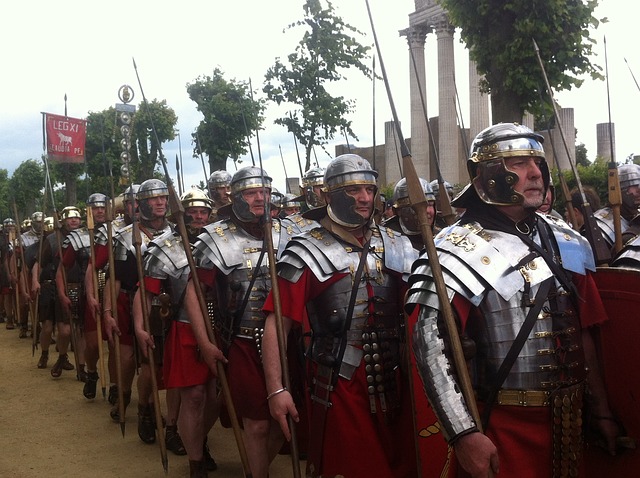 Eventually, the Syrian-Greeks, annoyed by their constant defeat at the hands of an inferior army, decided it was time to call in reinforcements to help them squash the troublesome rebellion for good. Soon joined by tens of thousands more soldiers, the Syrian-Greeks believed that it would be child’s play to topple the resistance, but once again, to everyone’s utter surprise, the Maccabees won yet another victory. Seeing how demoralized this made their enemies and understanding that Hashem was with them, Yehuda and his fearless rebels pressed onwards to Jerusalem, knowing that it was finally time for the Jews to return to their holiest city and liberated it once and for all. Making their way to Jerusalem, the Maccabees fought long and hard, ultimately taking back the city, reconquering the Holy Temple, and rooting out the Syrian-Greeks.
Eventually, the Syrian-Greeks, annoyed by their constant defeat at the hands of an inferior army, decided it was time to call in reinforcements to help them squash the troublesome rebellion for good. Soon joined by tens of thousands more soldiers, the Syrian-Greeks believed that it would be child’s play to topple the resistance, but once again, to everyone’s utter surprise, the Maccabees won yet another victory. Seeing how demoralized this made their enemies and understanding that Hashem was with them, Yehuda and his fearless rebels pressed onwards to Jerusalem, knowing that it was finally time for the Jews to return to their holiest city and liberated it once and for all. Making their way to Jerusalem, the Maccabees fought long and hard, ultimately taking back the city, reconquering the Holy Temple, and rooting out the Syrian-Greeks.
Humiliated once more, the Syrian-Greek army was about to prepare for another wave of war when word reached them of Antiochus the IV’s death. Immediately, the army leaders became much more concerned with the internal affairs of the Seleucid state than with continuing the conquest of Israel and so, a treaty was formed between the Syrian-Greeks and the Jews that allowed them to enjoy religious freedom once more! Thrilled by the turn of events, the Maccabees busied themselves with the task of restoring the Holy Temple, and from there, the Miracles of Hanukkah continued…
What was the Miracle of Hanukkah?
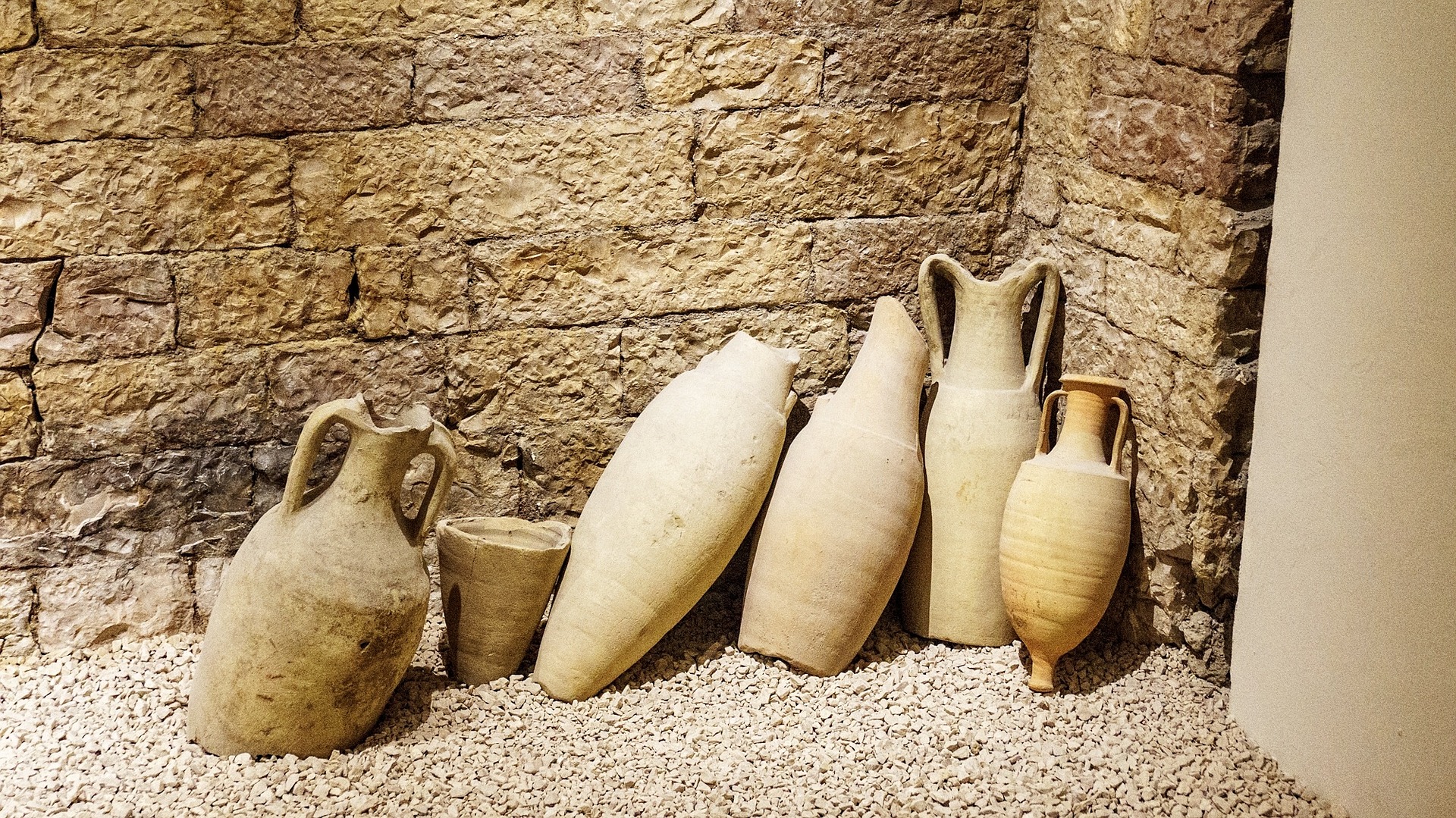 Obviously, one can easily argue that virtually all of the events associated with the Hanukkah story were miraculous, yet whenever people talk about “the Miracle of Hanukkah,” they are typically referring to the Miracle of the Oil. This miracle happened shortly after the Jews won back the Second Temple and found it ransacked, defiled, and littered with debris. Unwilling to let the wanton destruction deter them, the Jews quickly set to work cleaning and restoring the Temple, and in the process of doing so, they unexpectedly stumbled across a single, tiny cruse of oil amidst the wreckage that still bore the intact seal of the Kohen Gadol, the Jewish High Priest. Overjoyed by this incredible discovery, the Maccabees hurriedly crafted a new Temple Menorah to replace the golden one stolen by Syrians, and armed with their meager supply of oil from this undamaged flask, they lit the Menorah for the first time in many years, bathing the walls of the Holy Temple in the light of their dancing flames.
Obviously, one can easily argue that virtually all of the events associated with the Hanukkah story were miraculous, yet whenever people talk about “the Miracle of Hanukkah,” they are typically referring to the Miracle of the Oil. This miracle happened shortly after the Jews won back the Second Temple and found it ransacked, defiled, and littered with debris. Unwilling to let the wanton destruction deter them, the Jews quickly set to work cleaning and restoring the Temple, and in the process of doing so, they unexpectedly stumbled across a single, tiny cruse of oil amidst the wreckage that still bore the intact seal of the Kohen Gadol, the Jewish High Priest. Overjoyed by this incredible discovery, the Maccabees hurriedly crafted a new Temple Menorah to replace the golden one stolen by Syrians, and armed with their meager supply of oil from this undamaged flask, they lit the Menorah for the first time in many years, bathing the walls of the Holy Temple in the light of their dancing flames.
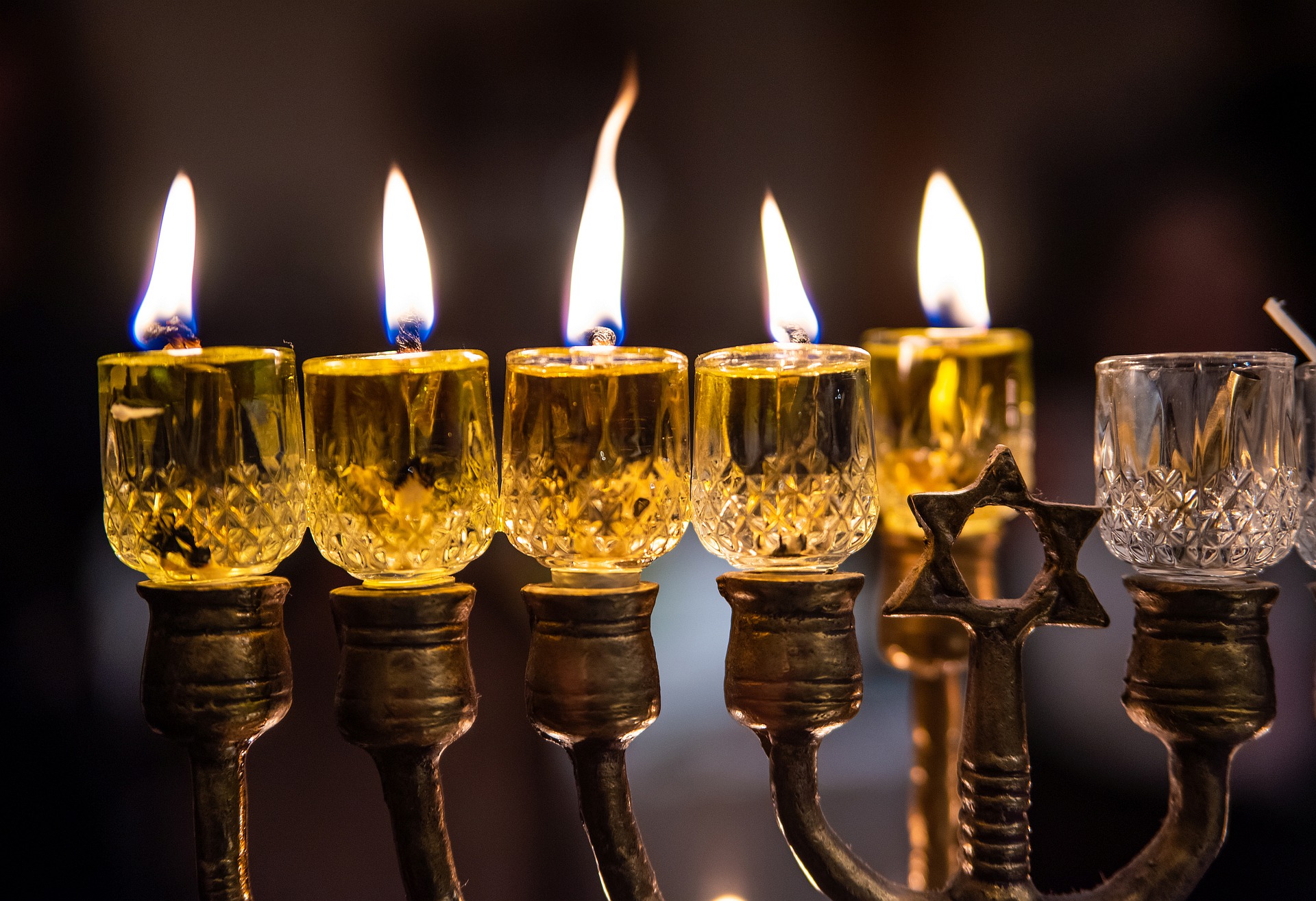 We can only imagine how euphoric the Maccabees must have been to finally light the Temple Menorah once more, even for just that brief moment while they made more oil. As it was, the Maccabees considered finding that small jug a miracle in and of itself; however, as soon as they realized that somehow, that singular days’ worth of oil was inexplicably lasting a full 8 days of burning – the exact amount of time it took to prepare a new batch of oil – they knew right then and there that the miracle they were witnessing was so spectacular, a special festival would need to be established in order to commemorate all of the many wonders they had experienced over the course of their campaign to reclaim the Holy Land. Soon after, Jews began celebrating a festival called Hanukkah, and thousands of years later, the Jews still continue celebrating this exciting 8-day holiday with our spectacular Hanukkah Menorahs and our oil-fried treats!
We can only imagine how euphoric the Maccabees must have been to finally light the Temple Menorah once more, even for just that brief moment while they made more oil. As it was, the Maccabees considered finding that small jug a miracle in and of itself; however, as soon as they realized that somehow, that singular days’ worth of oil was inexplicably lasting a full 8 days of burning – the exact amount of time it took to prepare a new batch of oil – they knew right then and there that the miracle they were witnessing was so spectacular, a special festival would need to be established in order to commemorate all of the many wonders they had experienced over the course of their campaign to reclaim the Holy Land. Soon after, Jews began celebrating a festival called Hanukkah, and thousands of years later, the Jews still continue celebrating this exciting 8-day holiday with our spectacular Hanukkah Menorahs and our oil-fried treats!
Of course, there are plenty of other special traditions we celebrate on Hanukkah besides lighting Menorahs and eating fried foods, but sadly, those will have to wait to be discussed in a different article because this one is beginning to get wayyy too long and we want to save some Hanukkah fun facts for next time! Our dearest friends, as always, we hope you had a great time reading our holiday blog about Hanukkah, and on behalf of all of Israel, we wish you all a very, very happy Hanukkah full of joy and light!
Chag Sameach y’all and all the best!
Your friends at Judaica Webstore
